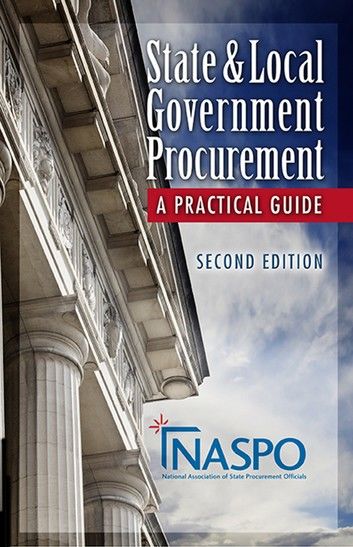| FindBook |
有 1 項符合
State and Local Procurement的圖書 |
 |
State and Local Procurement 作者:NASPO 出版社:J. Ross Publishing 出版日期:2015-01-29 語言:英文 |
| 圖書館借閱 |
| 國家圖書館 | 全國圖書書目資訊網 | 國立公共資訊圖書館 | 電子書服務平台 | MetaCat 跨館整合查詢 |
| 臺北市立圖書館 | 新北市立圖書館 | 基隆市公共圖書館 | 桃園市立圖書館 | 新竹縣公共圖書館 |
| 苗栗縣立圖書館 | 臺中市立圖書館 | 彰化縣公共圖書館 | 南投縣文化局 | 雲林縣公共圖書館 |
| 嘉義縣圖書館 | 臺南市立圖書館 | 高雄市立圖書館 | 屏東縣公共圖書館 | 宜蘭縣公共圖書館 |
| 花蓮縣文化局 | 臺東縣文化處 |
|
|
圖書介紹 - 資料來源:樂天KOBO 評分:
圖書名稱:State and Local Procurement
The National Association of State Procurement Officials is proud to make State and Local Government Procurement: A Practical Guide, 2nd Edition, available to government decision makers, educators, the business community, and others interested in learning more about how responsible public purchasing should be conducted. Whether you are a seasoned procurement professional or new to the field, this should be considered your tool of first resort for public procurement. This edition of NASPO’s flagship guide to public procurement features many changes and additional content, including updates to the emerging issues section and new chapters on e-procurement and IT procurement.Like the 2008 edition of this book, this 2nd Edition seeks to identify the current and rapidly changing forces that are challenging the role of the state or local government procurement officer and to suggest ways in which that government ought to address them. The text also describes principles and practices that are at the heart of a procurement system that must remain both flexible and accountable. According to U.S. Government Spending, state and local governments will spend an estimated 3.2 trillion in 2014. With procurement officers at the center of many of those expenditures, they must find new ways to offer effective service and quality to their user agency customers.The goal of this book is for the reader to come away with two key conclusions. First, challenges for state chief procurement officers continue to rapidly change and state central procurement organizations must adapt to these changes. In order to support the state and local mission, it is vital to focus on the entire supply chain and the changing needs of the marketplace to be successful.Second, a central procurement office cannot provide the effective leadership required to meet today’s complex procurement needs if located several layers below the jurisdiction’s highest-executive level. This isn’t a self-serving conclusion of NASPO. The objective and respected United States Government Accountability Office (GAO) made that point, as will be discussed in more detail in Chapter 2.
|




![塔木德:猶太人的致富聖經[修訂版]:1000多年來帶領猶太人快速累積財富的神祕經典 塔木德:猶太人的致富聖經[修訂版]:1000多年來帶領猶太人快速累積財富的神祕經典](https://media.taaze.tw/showLargeImage.html?sc=11100697818)





